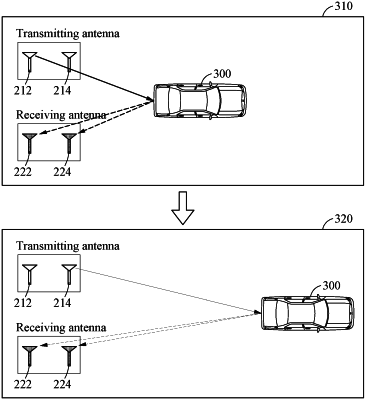| CPC G01S 13/343 (2013.01) [G01S 13/26 (2013.01); G01S 13/584 (2013.01); G01S 13/931 (2013.01)] | 34 Claims |

|
1. An object velocity detection method, the method comprising:
obtaining a first reception signal and a second reception signal that are received in first and second different time intervals corresponding to different transmission times by first and second different antennas in a radar sensor in a radar system, respectively, wherein a first phase difference of the first reception signal and a second phase difference of the second reception signal is based on a distance between the pair of antennas;
generating a Doppler compensated first signal and a Doppler compensated second signal by respectively removing, from the second reception signal and another second reception signal received by the first antenna during the second time interval, a Doppler effect estimated dependent on the first reception signal and the second reception signal;
estimating an angle value of an object, as an estimation of an included angle value in the second reception signal, dependent on the Doppler compensated first signal and the Doppler compensated second signal;
generating an angle value compensated first signal and an angle compensated second signal by respectively removing the angle value from the Doppler compensated first signal and the Doppler compensated second signal; and
determining a velocity of the object dependent on the angle value compensated first signal and the angle value compensated second signal.
|